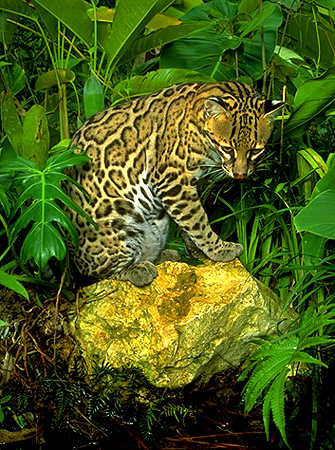| General
Information
Ocelots were listed as an endangered species in 1973. Ocelots
can be found throughout Central and South Americas living in both dry and
tropical areas. Their U.S. habitat consists of a few Texas counties
in the lower Rio Grande valley. In these counties, ocelots can be
found in thorny brush areas. These thickets are so dense that humans
can only crawl through them. However, their habitat has diminished
by 95% due to the development of land for housing projects and freeways.
Reduction of the thorny brush allowed for the ocelot to be more vulnerable
to predators such as bobcats, coyotes, humans, and others. It is
due to this industrialization of the land that ocelots have nearly disappeared
from the Texas landscape. Today fewer than 120 ocelots are still
in the wild in Texas.
|
| Special
anatomical, physiological
or behavioral adaptations: From above,
the dappling and coloration of the coast allows for the ocelot to be hiden
in brush and shrubs away from predators. Being nocturnal in nature,
it allows them to hide during the day safely so they may hunt and play
at night.
|

Copyright 2001 Tony Rath Photography All Rights Reserved trphoto.com |
| Personal
Observations:
|
|
|
|
Send E-mail to flirtysmurf@yahoo.com or to mac@whozoo.org |

WhoZoo Home